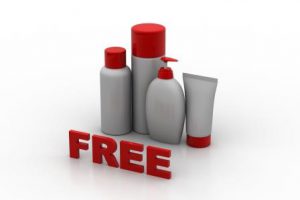By Jen Johnston, CHHC, senior marketing services account manager, for the Resolutions blog series
Have you been resisting putting together a sampling program for your product? It may be time to change that. Consider these stats:
- Eighty-one percent of consumers say that if they received a sample and liked the product, they would buy it, according to an Ad Age report on a study by Opinion Research Group
- Researchers have found that free samples increased consumers’ purchasing behavior towards the brand for as long as 12-months post-sampling
- Another survey found that 42% of respondents often or always switch from a brand they normally buy to a new brand as a result of trying a sample
Firsthand experience with a product is an excellent way to incent trial in people who might not otherwise take a chance on your brand, particularly when it is new.
Some products lend themselves to sampling more than others. For example, I read on this blog that customers were significantly more likely (93%) to purchase an upgraded bottle of wine ($10 more) when offered a sampling. In fact food and beverage products in general make great products to sample because the benefits (enjoyment of the experience, great taste, satiation, etc.) are immediate.
Health, beauty, and wellness products can make good samples as well, particularly those whose benefits are immediately apparent. Sampling an antacid to the right audience can make sense because the consumer will know immediately if it has an effect on their condition, however a regimen product that takes a month to kick in would not lend itself to sampling unless you were demonstrating a smaller pill size or some other experiential benefit other than the efficacy.
Personal care products also make great samples because the features and benefits can typically be experienced through a trial size of a product vs. a full-size.
Consumers are not the only groups to consider sampling to. Depending on your goals, you can also provide samples to:
- Social media influencers (to encourage recommendations)
- Healthcare professionals (to encourage recommendations)
- Independent retailers (to encourage stocking and recommendations)
- Wholesale or retail buyers (to encourage stocking)
While mailing samples direct to consumers’ homes can work with a very targeted list, it’s important to sample people as close as possible to the point-of-use, point-of-need, or point-of-sale. For a food brand, this may mean in-store demos while customers are already on the lookout for grocery items to add to their cart. For a beverage brand, this could mean sampling at a local fun-run while participants are thirsty.
For a personal care brand, this could mean sampling at the pharmacy where people are filling their basket with these types of items. For an OTC product, this could mean sampling at the healthcare professional’s office where the patients are expressing their need for such a product.
Point-of-need can work for the other groups as well. Retail buyers need to stock their stores with products that give them a competitive advantage, so sampling at trade shows and closed buying events can be advantageous.
Doctors need solutions to offer patients in office, so sampling at their offices makes sense. If it is a group like independent pharmacies you are after, sampling through co-op programs such as our IN.depth Product Sampler program can hit them when they are making stocking decisions. (Another fun fact – 61% of the responding pharmacists we surveyed indicated that they would order three or more of the products they received as samples through Product Sampler!)
When your samples end up in the hands of consumers, I recommend building in a response mechanism. This can take many forms including attaching a coupon or rebate for full-size product which can be tracked, a shipping code or discount code, or looking for a sales lift in the weeks or months following. You could also attach a survey to gauge purchase intent, and promote completion of the survey with a contest.
Finally, I recommend creating an easy way for consumers to share the experience socially for a little word-of-mouth marketing power. Include a #hashtag on your sample materials and encourage users to share. This is especially useful if you are sampling a product that aligns with the consumer’s values.
If you are on the fence about starting a sampling program, this may be the year to jump in. If you need help reaching independent pharmacists, healthcare professionals or another B2B audience, give us a call to learn how we can help!

